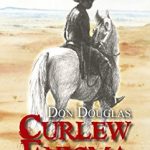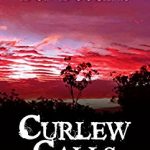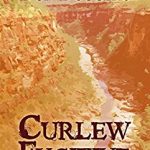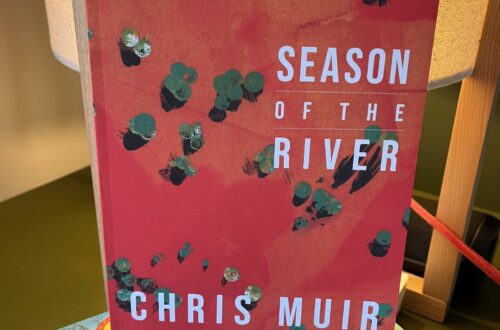
Australian author Don Douglas writes vivid and thrilling outback adventure stories that are hard to put down. You can tell that he lived the life he writes about – he worked as a ringer, head stockman, manager and owner of stations across Queensland. I recently took the opportunity to ask Don a few questions.
1) You grew up on a remote cattle station. Where was it, and what was it like for a kid growing up on the land back then?
I really don’t consider the place where I grew up to be remote. It was at Morven in south-west Queensland, 20 miles from town on a battler’s mulga, cypress, pine & range block of just 52 sq miles, almost 500 miles from Brisbane.
I learnt to ride young of course – first buster at 2 yo. My mother was carrying me on a cushion on the pommel of her saddle. Horse shied at a mulga snake & I landed on top of the snake. I don’t remember that but must do subconsciously because I’ve been scared of snakes all my life.
At 4yo, my only playmate was a 5yo Aboriginal boy who taught me the local dialect.
An Aboriginal ringer (who was an ex-Light Horse Trooper) taught me to track & to use an axe & adze when I was 5 or 6.
I first drove a D2 crawler tractor at 5 & at 6 or 7 helped my father dam-sinking, driving the tractor while he handled the single furrow mouldboard plough & working a 1.5 yard Meadowbank scoop while he drove the machine.
I learnt fencing, yard building & ringbarking pretty young & by 10 or 12 was riding pretty lively horses. Some could hump up a bit.
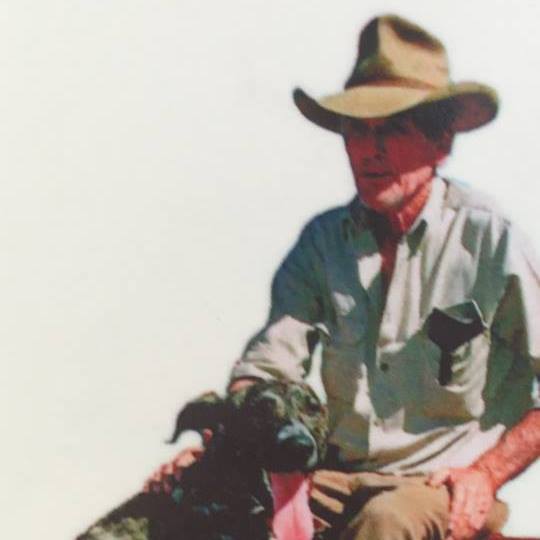
2) How old were you & what year was it when you had your first paid job?
I went to boarding school at 11 & after that I was usually paid a quid a week to work during the school holidays, mustering, fencing, ringbarking or whatever – left school in 1961 & went on the payroll as a first-year jackeroo on 7 pounds, 2 shillings & sixpence/week – big money I thought but a bit demeaning to be on 1st year wages with 10 or 11 years experience.
3) Who was the toughest man or woman you’ve ever met?
For outright oblivion to pain, an old family retainer, John Neilsen, who came to work for my great-grandfather in 1917 & never left our family. At 7 yo he had his back broken in a cave-in, while working underground in Broken Hill Mine. His family couldn’t afford a doctor & his mother nursed him for two years bedridden. He was a hunchback & his nerves must have been scrambled because he almost never experienced pain from burns, wounds or afflictions except gout.
My father was a tough man, could ride most any horse, was a good boxer & footballer, could do hard physical work for 72 hours straight when called for. He was a hard, critical taskmaster.
The toughest woman I ever knew was Emily Locke from Sommariva, near Charleville. She won the first-ever buckjump event in Morven but was disqualified when it was discovered she was a woman. She was rough & tough, could bash a man – looked & lived like a man. In some ways a bit like Eliza in my stories.
4) What are some of the Australian books you enjoyed reading most?
I’ve been a voracious reader most of my life & have pretty catholic tastes. I learnt to read before I started school by reading comics. At boarding school I read pretty much the whole library. There are so many great & good Australian books so I’ll name a few of them.
Moleskin Midas, by Tom Ronan (& any book by him).
The Shiralee, by Darcy Niland (& any book by him).
Lasseter’s Last Ride, by Ion Idriess (& any book by him).
Coal Country, by Alex Miller.
The Gun Ringer, by Geoff Allen.
The Long Goodbye, by PJ Parker.
Icing on the Damper, by Marie Mahood (& her other books).
The Cattle Duffers of the Outback, by Frances M Boyle.
Naked Under Capricorn, by Olaf Ruhen (1958).
The Light between Oceans, by ML Stedman.
5) When did you start writing?
At boarding school between 1956 – 61, firstly war or ghost stories & then westerns later on, for the school magazine.
In High School I paid little attention in class & read a Cleveland western under the desk every day if I had one to read. I also read stuff like God’s Little Acre (which of course was banned at school).
My westerns were maybe 3-5000 word jobs.
I started writing full length novels in about 1995, after a few unsuccessful short stories submitted to Playboy & the ilk. My first full length novel was Curlew Enigma, which underwent much reorganization & editing by me before it was presentable for publishing. I lost count of the rejections & I was finally published by Boolarong Press in 2014.
6) Tell us a bit about your books.
The Curlew series follows the lives & exploits of the McDonald descendants of the matriarch, the drover & bushranger Eliza, from 1840 until the present & is a work in progress (currently writing #11 in the series, writing first person, present tense, from the point of view of an 11 year old girl). The stories gradually evolve to include murder, international espionage, mining, gem trading, Iraq, Afghanistan, US Trade Centre attack & much more.
The Saint Clair series of 9 books, starting with Rosslyn Legacy, follows the Saint Clair family from the Civil War in America until the present (with the last in the series unearthing family documents back to the last Jacobite rebellion in Scotland). The mystery surrounding 150 years of US government persecution of the family is finally revealed. Down through the volumes the Saint Clair family intermarries with the Curlew McDonalds & the two series become entwined to an extent (although each book of each series does stand alone).
The Chillcott series of 3 books covers the period from mid 1800s to recent times in NSW & Queensland.
I have 5 more completed stand alone novels, including one, Gone Cop, a contemporary crime novel written with the main character in first person, present tense. I still have quite a few more already written longhand to be typed up & edited.
Don’s latest book, The Copper Crossing Mystery is due to be launched on Saturday March 5, and is available direct from the publisher here or as an eBook on Amazon here.
